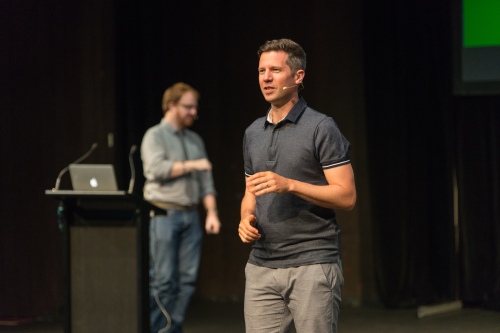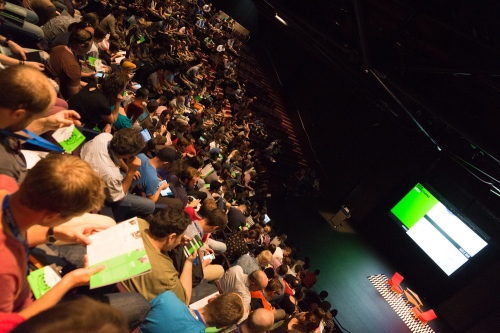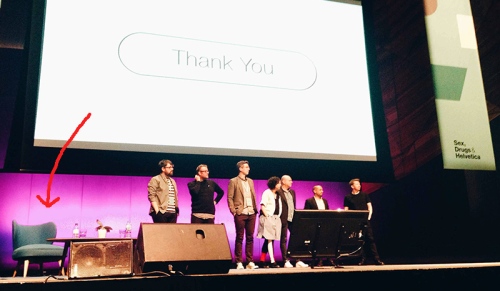A few weeks ago I was fortunate enough to MC the 10th edition of Web Directions. WebDirections is Sydney’s premier conference for the creative development scene with about 700 attendees and plenty of high-profile international speakers. I have to thank Maxine Sherrin and John Allsopp for trusting me to guide the audience of the Product, Experience and Design stream.
It was an absolute pleasure and if I could, I would jump onto the next stage tomorrow and do it all over again. Judging from the audience’s reactions I didn’t do a shabby job either. Videos of each talk including my MC-ing bit will appear shortly and I will repost them here. So if are organising a conference, panel, session or series of talks or know someone who does, drop me a line and I’d be happy to help out in the near future. 😉

Looking back, it was a fresh challenge for me to switch positions and, rather than being a speaker myself, talk to other speakers about their topic. During their speeches I was simultaneously taking notes, weighing up pre-researched questions with live tweets from the floor, scribbling tangential thoughts I had while listening. Most importantly I was judging the live audience’s physical reactions, whether they were leaning in, laughing or getting distracted.
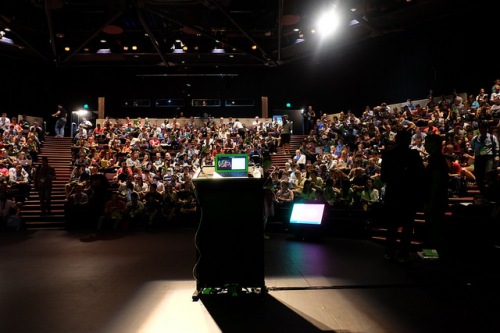 Overall it was a great training exercise in moderation. As for prep, I had the help of Andy Murray (Gatsby Studio) who is actually an illustrator and artist by trade. He brilliantly MC’d the previous conference I was speaking at, Sex Drugs & Helvetica. there is a short review from it here on my blog. As you might be able to tell from the two photos below, I nicked the idea of having seats and a table from the Sex, Drugs & Helvetica event. You can see that the furniture style and arrangement even looks similar, but that happened without me briefing Web Directions on it.
Overall it was a great training exercise in moderation. As for prep, I had the help of Andy Murray (Gatsby Studio) who is actually an illustrator and artist by trade. He brilliantly MC’d the previous conference I was speaking at, Sex Drugs & Helvetica. there is a short review from it here on my blog. As you might be able to tell from the two photos below, I nicked the idea of having seats and a table from the Sex, Drugs & Helvetica event. You can see that the furniture style and arrangement even looks similar, but that happened without me briefing Web Directions on it.
There is a very comprehensive review of the conference and many speakers here on Ben Buchanan’s blog, additionally some observations here from Kye White. In the below I would simply like to add a few personal thoughts on what an MC is supposed to do. It is a combination of what Andy Murray told me and what I picked up during the day. Take it as advice if you’re planning to do something similar and let me know if it worked for you as well:
- It’s not about you, it’s about the speakers. So don’t play up your questions and opinions like you’re an additional speaker. Let the audience feel at ease, the first 20 – 60 seconds are crucial for it.
- Organise your notes on housekeeping, don’t stumble across details as to when the break takes place or who’s up next.
- Keep your question short, ideally no more than 7 seconds. Interviewees start thinking about their answer after that point. So they will be unable to listen any longer. You’ll notice it happen when an interviewee asks the MC ‘So what was the question again?’
- When you are interested, the audience will be interested as well. Try to find something that interests you personally – the audience will follow you. You direct their interest through you, just like actors create empathy for the roles they are playing.
- Do some research on the speakers, but don’t overdo it. You’re not acting as some sort of human wikipedia. As soon as you rattle off too many points, especially when reading them off a written card, everything will sound forced on stage.
- Your research will help you have an informal chat with the speakers beforehand. Have them tell you an anecdote, something that, when you retell it on stage, will make the audience believe you’re familiar with the speaker. Some people at WD believed I had known the speakers from before whereas I had only just met them.
- It’s your job to let speakers feel at ease, like they are just telling you their answer. An experienced speaker might be able to address both MC and audience simultaneously, but most speakers are professional experts in their field, not in public speaking.
- Try to draw connections between the talks where you can. Even if the link is spontaneous and idiosyncratic, it will make the audience feel like there is a flow and a theme to the event.
- Give the later speakers something to bounce off of. After I mentioned in one Q&A, that there might be too much agreement among the presenters, up came Dan Hon. He opened his talk with a slide on ‘controversy’ and ‘dissent’. This trick can also help the speakers energise their own talk. It then has a fresh element to the last time they spoke about the same topic.
- Finally, be respectful to an audience, be they paying or non-paying. Do a good job, be prepared, rehearse your bits and concentrate.They have come to give you their attention. So don’t insult them by trying ‘to just wing it’.
Overall it was fantastic opportunity to get to know some brilliant minds from around the world. There were some seasoned speakers among them, which helped me compare their styles in a short amount of time.
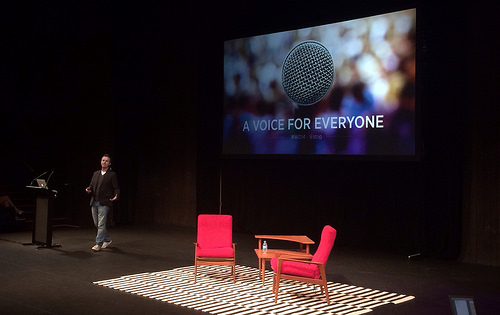 Douglas Bowman, Twitter
Douglas Bowman, Twitter Scott Thomas, The Noun Project
Scott Thomas, The Noun Project Matt Webb, BERG
Matt Webb, BERG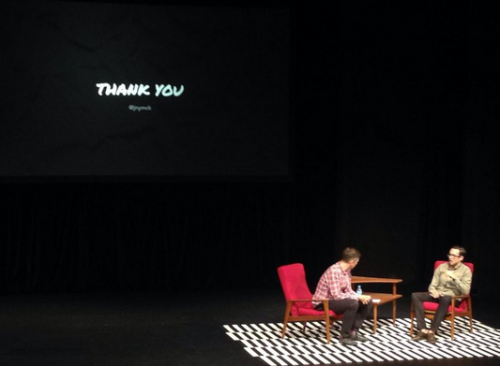 Jonny Mack, Google
Jonny Mack, Google Tom Armitage, Infovore
Tom Armitage, Infovore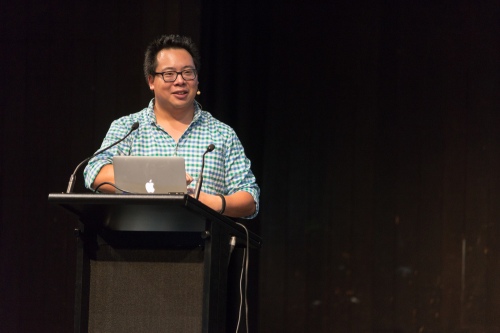 Dan Hon, Code for America
Dan Hon, Code for America Erin Moore, Twitter
Erin Moore, Twitter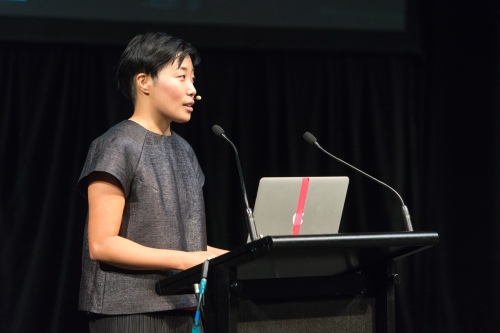 Younghee Jung, Nokia/Microsoft
Younghee Jung, Nokia/Microsoft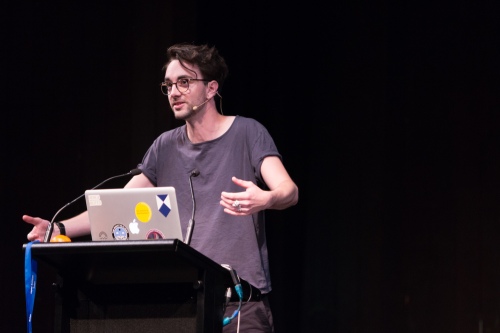 Tobias Revell, Superflux/ARUP
Tobias Revell, Superflux/ARUP John Allsopp, Web Directions
John Allsopp, Web Directions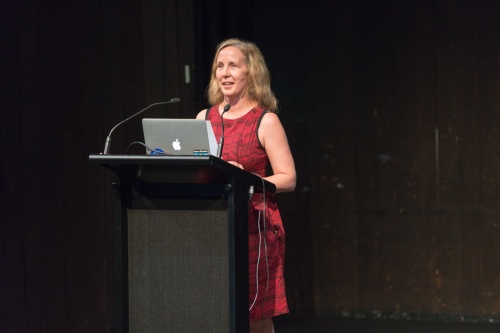 Maxine Sherrin, Web Directions
Maxine Sherrin, Web Directions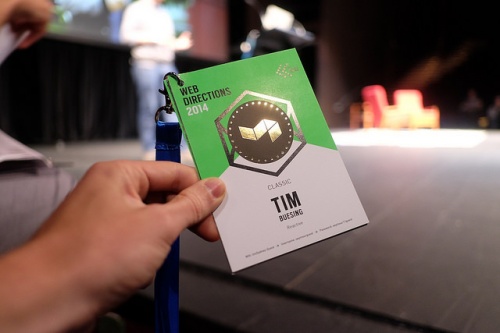 Photos by Xavier Ho – Jump to Glide and Tim Lucas – ToolManTim, licensed under Creative Commons Attribution-ShareAlike 3.0 Unported License.
Photos by Xavier Ho – Jump to Glide and Tim Lucas – ToolManTim, licensed under Creative Commons Attribution-ShareAlike 3.0 Unported License.

